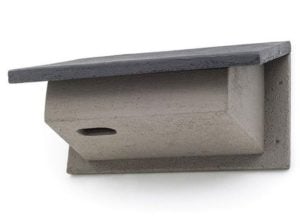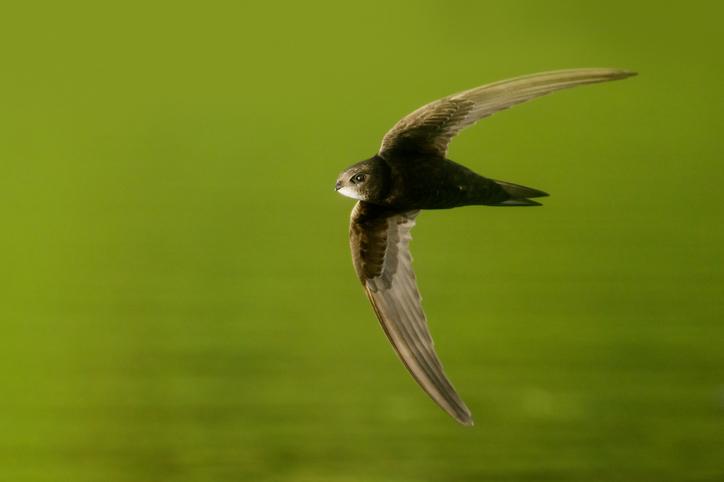
The common swift (Apus apus) belongs to the Apodidae family which consists of adaptable birds species that can occupy all continents apart from Antarctica. The relatives of these aerial birds include the American swift, swiftlets and spinetails. The etymology of the name Apus is rooted in Latin apūs and Ancient Greek ἄπους and means 'without feet'. Some think that these birds bear a resemblance to swallows which have a shorter tail. Indeed Jobling (2010) noted that the name apus is associated with a 'type of swallow said to have no feet' and a 'bird of the swallow kind'. Swifts can be identified by their larger and long sickle-shaped wings, as well as their characteristic high-pitched screeching call.
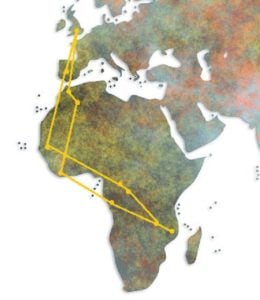 Migration and feeding habits
Migration and feeding habits
According to the RSPB swifts spend much of their lives in the air, with an average daily commute of 500 miles. This is an astounding amount - totting up to over one million miles in a lifetime! Interestingly, this insectivorous species is adept at undertaking all essential tasks on the wing, including feeding, sleeping, and mating. BTO data and RSPB information indicates that swifts migrate from Central or West Africa to the UK (figure to left). They tend to be one of the late arrivals in the UK, often popping up by the end of April, and leaving again in august when they traverse the Sahara desert to complete their return to their wintering location in Africa.
As previously mentioned, swifts are insectivores - insects are a critical part of juvenile development. The RSPB refer to swift food as 'aerial plankton' which can include species like aphids, flying ants, mosquitoes, hoverflies, and beetles. Swifts can take 1,000 insects back to the nest in one go, collecting as many as 100,000 insects in one day alone, due to having the capacity to carry their food in the form of a bolus in a specialised food pouch located in their throats.
Nesting habits
Swifts are creatures of habit as they pair for life and tend to return to the same nest site year after year. They are a gregarious species that nest in colonies in long barrows, roof spaces, cliffs and caves. Nesting season starts between May and July and they lay 2 or 3 eggs over two to three-day intervals. Their incubation time is longer than many birds at 19–25 days and, dependent on weather conditions, the nestlings leave the nest after 37 to 56 days. Swift chicks are well adapted to survive inclement conditions, indeed Koskimies (1950; in Cucco & Malacarne, 1996) noted their ability to enter a period of hypothermia, in which they lower their metabolic rate, in order to survive conditions that would normally prove fatal.
It is important to note that when swifts nest in older buildings they are very vulnerable to conversions, refurbishments and demolitions. The worst threats to swifts are modern building practices such as plastic gable end cladding, the use of flat roof tiles, and blocking nest sites with scaffolding and building wrap. Any work to a property should be avoided during the nesting season, with nest sites being preserved through the provision of nest holes which match previous entrances, or the fitting of a new swift box nearby.
Picking the right box
Swifts commonly nest in colonies on buildings and need boxes with just the right dimensions. Swift boxes can be integrated into a wall or retrofitted extension. Nest moulds can provide a stable foundation for their nests to stop the eggs from rolling away.
Swift boxes should be carefully and safely installed at least 5m above ground, under an overhand or eaves for protection. Boxes should face in a North Westerly or North Easterly direction to shelter them from the glare of the sun. Swifts fly straight into their nesting areas, so there should be a clear adjacent airspace. Predators (mainly cats, magpies, crows, squirrels and rodents) should not be able to access the boxes, so they need to be kept away from branches, climbing plants and aerials.
Swifts leave very few droppings externally, and their nests should not need to be cleaned unless used by another species. It is important to check that fittings are still secure during the winter months. Remember that swifts are protected by the Wildlife and Countryside Act 1981, making it illegal to damage an active nest site.
Top boxes for you to choose from
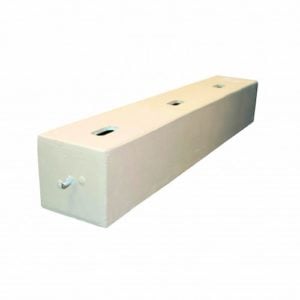
Genesis Swift Nest Box, Triple
Externally install with stainless steel fixings Designed with input from conservation bodies Eco-friendly Magnesium Oxide construction Insulated and waterproof Dims 90 x 15 x 15 cm (6.5 x 2.5 cm hole) 30 year manufacturer’s warranty
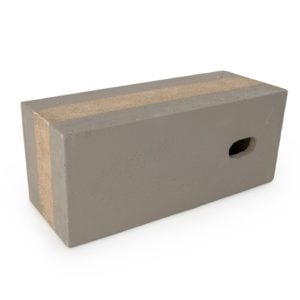 Vivara Pro Woodstone Swift Box
Vivara Pro Woodstone Swift Box
Made from durable, insulating Woodstone Designed to be fitted high under the eaves Once installed it requires no maintenance Protects swift nests from predators and extreme temperatures Dims: 42 x 15.5 x 17cm
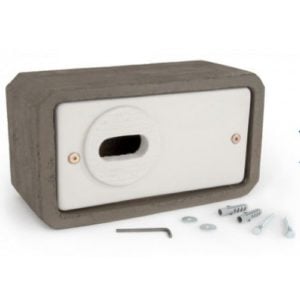 Woodstone Build-In Swift Nest Box
Woodstone Build-In Swift Nest Box
Made from Woodstone Build into a wall with the front panel visible Mount externally on an outside wall Fixings supplied Dims: 33.5 x 18.5 x 16 cm Weight: 7kg
Made from Woodstone Base entrance deters starlings house sparrows Rear opening for cleaning Sloping roof to deter pigeons Dims: 38 x 26.5 x 24.5 cm.
Want to help British Birds?
Want to help British birds? If you would like to protect swifts in your home, garden, or building, view our swift boxes here.
Interesting research
Amichai & Kronfeld-Schor (2019) Artificial Light at Night Promotes Activity Throughout the Night in Nesting Common Swifts (Apus apus), Scientific Reports volume 9, Article number: 11052
Nilsson et al (2019) Flocking behaviour in the twilight ascents of Common Swifts Apus apus, International Journal of Avian Science, volume 161, issue 3, pages 674-678
Lentink & de Kat (2014) Gliding Swifts Attain Laminar Flow over Rough Wings, PLOS ONE
Lentink et al (2007) How swifts control their glide performance with morphing wings, Nature volume 446, pages 1082–1085
Edited by Carmen Wheatcroft

